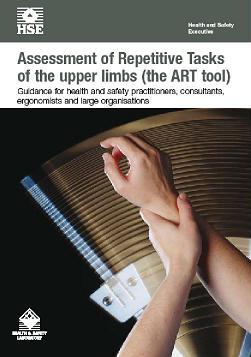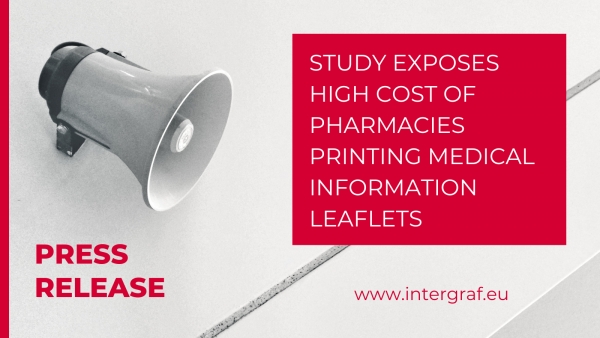11 May 2010

Risk assessing repetitive tasks made easy
Work-related upper limb disorders in the printing industry result from tasks such as: hand collating of printed sheets, producing hard book and loose leaf file covers by hand, knocking up of sheets, many of which involve repetitive actions, uncomfortable working postures and excessive force. If not addressed when early signs of discomfort are noticed, these repetitive actions can lead to a permanent disability and sufferers leaving the industry altogether, at a significant cost to the employer.
As an employer, you have legal duties under the Health and Safety at Work etc Act 1974 and Management of Health and Safety at Work Regulations 1999 to ensure the health and safety of employees at work and assess and reduce potential risks. These duties extend to preventing work-related upper limb disorders (ULDs) or stopping them getting worse.
Other regulations impose requirements relevant to the prevention of ULDs, these include:
Workplace (Health, Safety and Welfare) Regulations 1992
Provision and Use of Work Equipment Regulations 1998
Manual Handling Operations Regulations
The way the work is organised and managed can make a significant contribution to the risk of ULDs as well as make them worse.
The Assessment of Repetitive Tasks (ART) tool (click here to download) is designed to help you risk assess tasks that require repetitive moving of the upper limbs (arms and hands). It assists you in assessing some of the common risk factors in repetitive work that contribute to the development of Upper Limb Disorders (ULDs). However, please note that the ART tool is intended for use with Display Screen Equipment assessments.
The ART tool helps you to:
• Identify repetitive tasks that have significant risks and where to focus risk reduction measures
• Prioritise repetitive tasks for improvement
• Consider possible risk reduction measures
• Meet legal requirements to ensure the health and safety of employees who perform repetitive work
How does it work?
The tool uses a numerical score and a traffic light approach to indicate the level of risk for twelve factors. These factors are grouped into four stages:
A: Frequency and repetition of movements
B: Force
C: Awkward postures of the neck, back, arm, wrist and hand
D: Additional factors, including breaks and duration
The factors are presented on a flow chart, which leads you, step-by-step, to evaluate and grade the degree of risk. The tool is supported by an assessment guide, providing instruction to help you to score the repetitive task you are observing. There is also a worksheet to record your assessment.
The task scores and exposure scores help prioritise those tasks that need most urgent attention and help check the effectiveness of any improvements.
Colours are assigned to the risk factors to help identify where to focus your risk reduction measures.
To assist members the BPIF has developed ART tool risk assessment form (click here to download) for use with this new booklet.
We are also developing a form for comparing repetitive tasks so that if activities are changed in order to reduce the risk it is possible to compare the movements of each task to ensure that the change is beneficial.
If you assessment shows there is a real potential for employees to develop WRULDs and the work cannot be eliminated or mechanized , methods of working can be improved in a number of ways:
• ensuring jobs are rotated so that no individual spends a long time on the task
• provide adequate rest breaks and ensure employees take the breaks
• allowing employees to manage the pace of their work
• providing monitoring and reporting procedures for early signs of WRULDS so that changes can be instigated
 Intergraf Economic News (Paper Prices) - March 2024
Intergraf Economic News (Paper Prices) - March 2024
18 March 2024
Access the latest edition of the Economic Newsletter for the European Printing Industry for data on paper consumption, and pricing data for pulp, paper and recovered paper. Data for packaging papers and board is also available with this edition.
 STUDY EXPOSES HIGH COST OF PHARMACIES PRINTING MEDICAL INFORMATION LEAFLETS
STUDY EXPOSES HIGH COST OF PHARMACIES PRINTING MEDICAL INFORMATION LEAFLETS
7 March 2024
Intergraf welcomes the release of a study by our partner MLPS (Medical Leaflet = Patient Safety), a subgroup of the European Carton Manufacturers Association (ECMA) shedding light on the potential economic costs associated with the proposed use of Print on Demand (PoD) leaflets in the pharmaceutical legislation revision.

The BPIF is the printing industries champion. By becoming a member you join a diverse and influential community. We help you solve business problems, connect you to new customers and suppliers and make your voice heard in government.
Call 01676 526030









